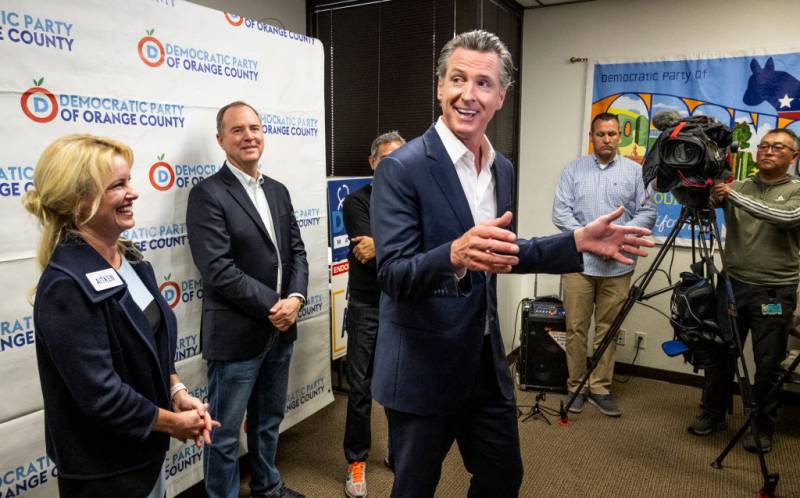Gov. Gavin Newsom easily won reelection Tuesday night, roundly defeating his little-known Republican challenger, Brian Dahle, with The Associated Press calling the race just minutes after polls closed.
Newsom had secured more than 57% of the vote as of Thursday’s count, a commanding lead reflective of a state with nearly twice as many registered Democrats as Republicans.
Newsom’s reelection was presaged by the overwhelming defeat of an effort to recall him last year, which was rejected by 62% of voters. In fact, despite having plenty of campaign cash, Newsom didn’t even air a campaign ad for his reelection, choosing instead to put his weight behind the passage of Proposition 1 for abortion rights; against Proposition 30, a measure to tax the wealthy to fund climate goals; and to attack the conservative policies of governors in Texas and Florida.
“One thing that is settled here today is who we are as a state and what we hold dear in terms of our values,” Newsom told supporters at a Proposition 1 election night party in Sacramento.
“As we turn the page on this campaign — and I hope we turn the page on this polarization in our national discourse, once the dust settles with all these national elections — we can start to reconcile those differences and all start to focus on these universal values, this journey for recognition,” he said.

